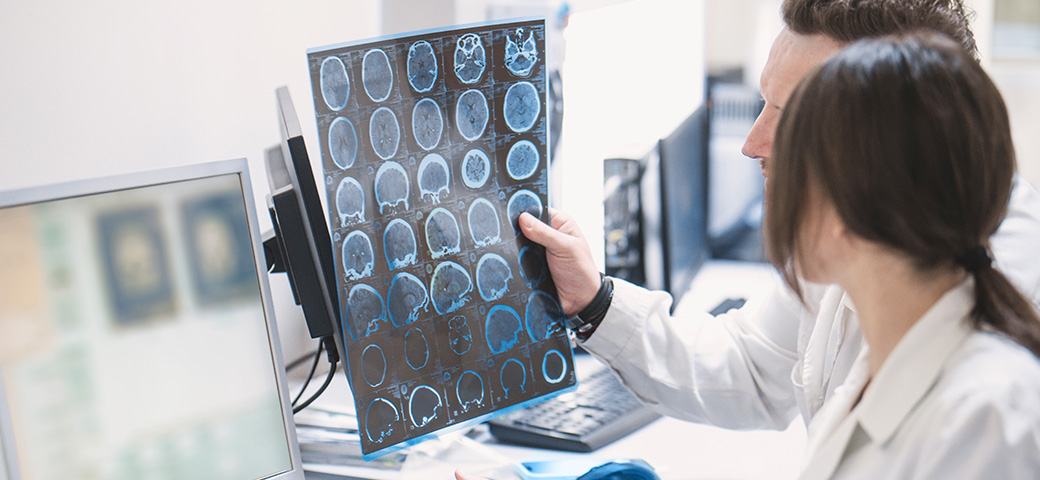Stroke Symptoms Checklist: Are You at Risk?
Mar 28, 2025
HEALTH,INSIGHTSStroke symptoms are crucial signs of a medical emergency that require immediate attention. Early recognition can save lives. This guide covers what a stroke is, its causes, symptoms, the importance of stroke analysis, and how to find the best neurologists for stroke care.

Stroke is a serious condition, but quick recognition of symptoms and expert care can improve recovery. Use the FAST method to spot symptoms and get help immediately. Stay informed to reduce risks and improve outcomes.
What is a Stroke?
A stroke occurs when the blood supply to part of your brain is interrupted or reduced. This interruption prevents brain tissue from getting oxygen and nutrients, which causes brain cells to die within minutes. There are two main types of strokes:
- Ischemic Stroke – This type of stroke happens when a blood clot blocks or narrows an artery leading to the brain.
- Hemorrhagic Stroke – This type occurs when a blood vessel in the brain bursts, leading to bleeding in the brain.
Both types of strokes are serious and can cause lasting damage or even be fatal. Recognizing stroke symptoms as early as possible is crucial to increasing your chances of recovery.

What Causes a Stroke?
Strokes are primarily caused by two factors: blockages in the blood vessels (ischemic stroke) or bleeding in the brain (hemorrhagic stroke).
- Risk factors for ischemic stroke include high blood pressure, heart disease, diabetes, high cholesterol, smoking, and being overweight.
- Risk factors for hemorrhagic stroke often include high blood pressure, aneurysms, head injuries, and blood-thinning medications.
Being aware of these risk factors can help you take preventive measures to reduce your likelihood of having a stroke.
What Are Stroke Symptoms?
Recognizing stroke symptoms can save lives. Use the FAST method to remember the most common symptoms:
- F – Face Drooping: One side of the face may droop or feel numb. Ask the person to smile and see if the smile is uneven.
- A – Arm Weakness: One arm may feel weak or numb. Ask the person to raise both arms and see if one arm drifts downward.
- S – Speech Difficulty: Speech may become slurred or difficult to understand. Ask the person to repeat a simple sentence to check for speech problems.
- T – Time to Call Emergency Services: If you notice any of these signs, get help immediately by calling emergency services. Time is critical in treating a stroke.
Other symptoms of stroke include sudden confusion, trouble seeing in one or both eyes, and sudden severe headache with no known cause. You need a specialist who can quickly diagnose and treat strokes with precision. One of the best ways to find top neurologists is through online platforms like Wupdoc.
Stroke Treatment
The treatment of a stroke depends on the type of stroke you have. For ischemic strokes, doctors may administer clot-busting drugs (tPA) to restore blood flow to the brain if given within a few hours of symptom onset. For hemorrhagic strokes, treatment focuses on controlling the bleeding and reducing pressure in the brain, sometimes requiring surgery.
The earlier treatment is administered, the better the chances of minimizing brain damage. Rehabilitation after a stroke is also essential and can include physical, speech, and occupational therapy to help patients regain lost skills.
Importance of Stroke Analysis
Stroke analysis, also known as stroke assessment, is critical for understanding the type of stroke, its severity, and the most appropriate treatment plan. A stroke analysis typically involves imaging tests like CT scans or MRI to visualize brain activity and identify the affected area. Analyzing these results allows medical professionals to determine whether the stroke is ischemic or hemorrhagic, which helps guide the best course of action.
Early stroke analysis is crucial because it leads to faster and more accurate diagnosis, allowing for the rapid intervention needed to minimize brain damage. It also helps in planning long-term care and rehabilitation strategies.

How to Find the Best Neurologists for Stroke Analysis
When it comes to stroke treatment and analysis, finding the right neurologist is key to ensuring you receive the best care possible. You need a specialist who can quickly diagnose and treat strokes with precision. One of the best ways to find top neurologists is through online platforms like Wupdoc.
Wupdoc is an online platform that allows you to easily find and compare neurologists and stroke specialists based on their qualifications, patient reviews, and treatment options. By using Wupdoc, you can schedule consultations and select a doctor who fits your needs. The platform provides a wide range of doctors from different countries, so you can choose a specialist who meets your criteria and provides the highest standard of care.
Additionally, Wupdoc allows you to view prices and get quotes from different clinics, ensuring that you can make an informed decision based on both the expertise of the neurologist and the cost of treatment. This makes it easier to find the best neurologist for stroke analysis and treatment, no matter where you are.
Get a Free Quote
Let Us Help You Find the Best Doctors for Your Needs
Fill out the form, and an assistant will contact you shortly to discuss your needs and guide you to top specialists.

Table of Contents
read this next:
Mar 26, 2025
INSIGHTS,TECHNOLOGYIs Electroencephalography Safe? What You Should Know
When it comes to diagnosing brain-related conditions, electroencephalography (often shortened to EEG) is one of the most commonly used tools. But is it safe? In this guide, we’ll break it down in simple terms—what it is, its purpose, safety, and how you can find the best EEG services with Wupdoc.
Looking for the Right Treatment?
Let us find the best doctors & clinics you need. Get your free quote today!
Get a Free Quote
